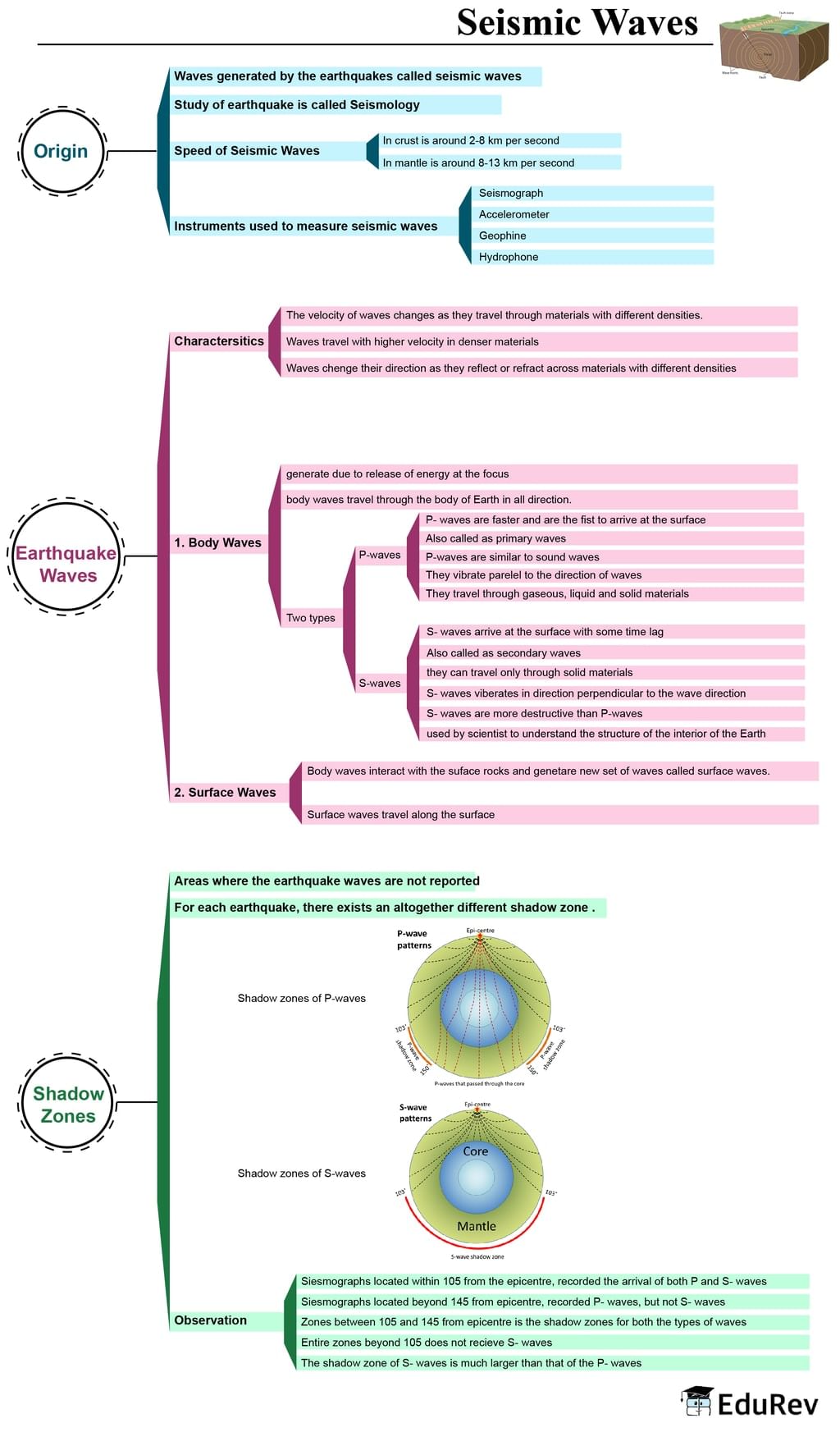UPSC Exam > UPSC Notes > Geography for UPSC CSE > Mind Map: Seismic Waves
Mind Map: Seismic Waves | Geography for UPSC CSE PDF Download

The document Mind Map: Seismic Waves | Geography for UPSC CSE is a part of the UPSC Course Geography for UPSC CSE.
All you need of UPSC at this link: UPSC
|
264 videos|875 docs|232 tests
|
FAQs on Mind Map: Seismic Waves - Geography for UPSC CSE
| 1. What are seismic waves and how are they generated? |  |
Ans. Seismic waves are vibrations that travel through the Earth's crust, caused by the release of energy during an earthquake. They are generated when stress accumulated in rocks exceeds their strength, causing them to rupture and release the stored energy in the form of seismic waves.
| 2. How are seismic waves classified? |  |
Ans. Seismic waves are classified into three main types: primary waves (P-waves), secondary waves (S-waves), and surface waves. P-waves are the fastest and travel through solid and liquid materials, while S-waves are slower and only travel through solid materials. Surface waves, on the other hand, travel along the Earth's surface and are responsible for the most destructive effects of an earthquake.
| 3. What is the difference between P-waves and S-waves? |  |
Ans. P-waves, also known as compressional waves, cause particles in the ground to move in the same direction as the wave's propagation, similar to a slinky compressing and expanding. S-waves, also called shear waves, cause particles to move perpendicular to the direction of the wave's propagation, similar to shaking a rope. This difference in motion allows seismologists to determine the distance between an earthquake and a seismometer.
| 4. How do seismic waves help scientists study the Earth's interior? |  |
Ans. Seismic waves play a crucial role in studying the Earth's interior. By analyzing the behavior of seismic waves as they travel through different layers of the Earth, scientists can infer valuable information about the composition, density, and structure of the planet's interior. This technique, known as seismic tomography, helps in understanding the Earth's core, mantle, and crust.
| 5. Can seismic waves be used to predict earthquakes? |  |
Ans. While seismic waves themselves cannot be used to predict earthquakes with certainty, they provide valuable information that contributes to earthquake forecasting and early warning systems. By monitoring the characteristics of seismic waves during smaller earthquakes, scientists can estimate the likelihood of a larger earthquake occurring in the future. This knowledge helps in designing and implementing measures to mitigate the potential impacts of earthquakes.
Related Searches

















